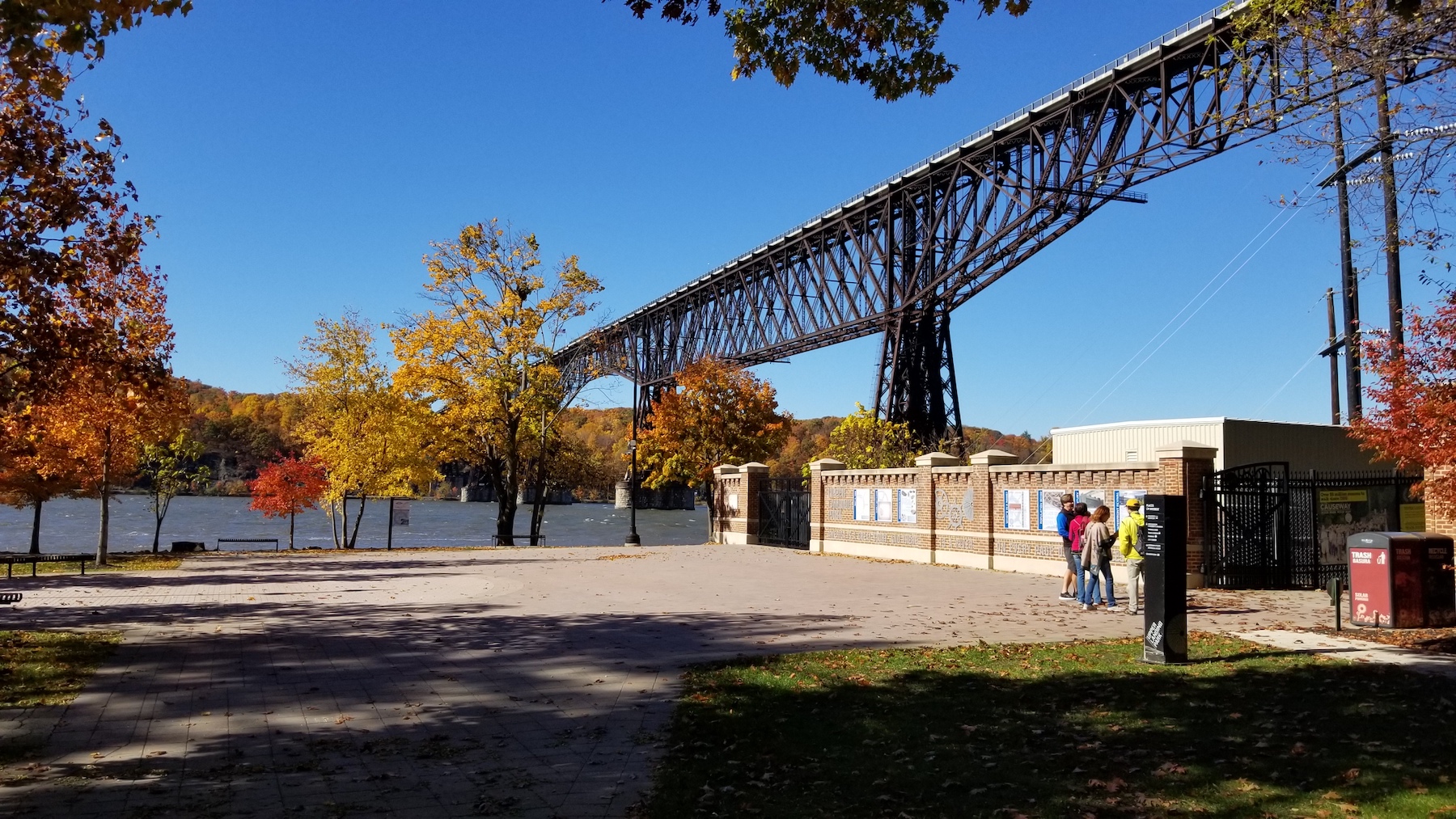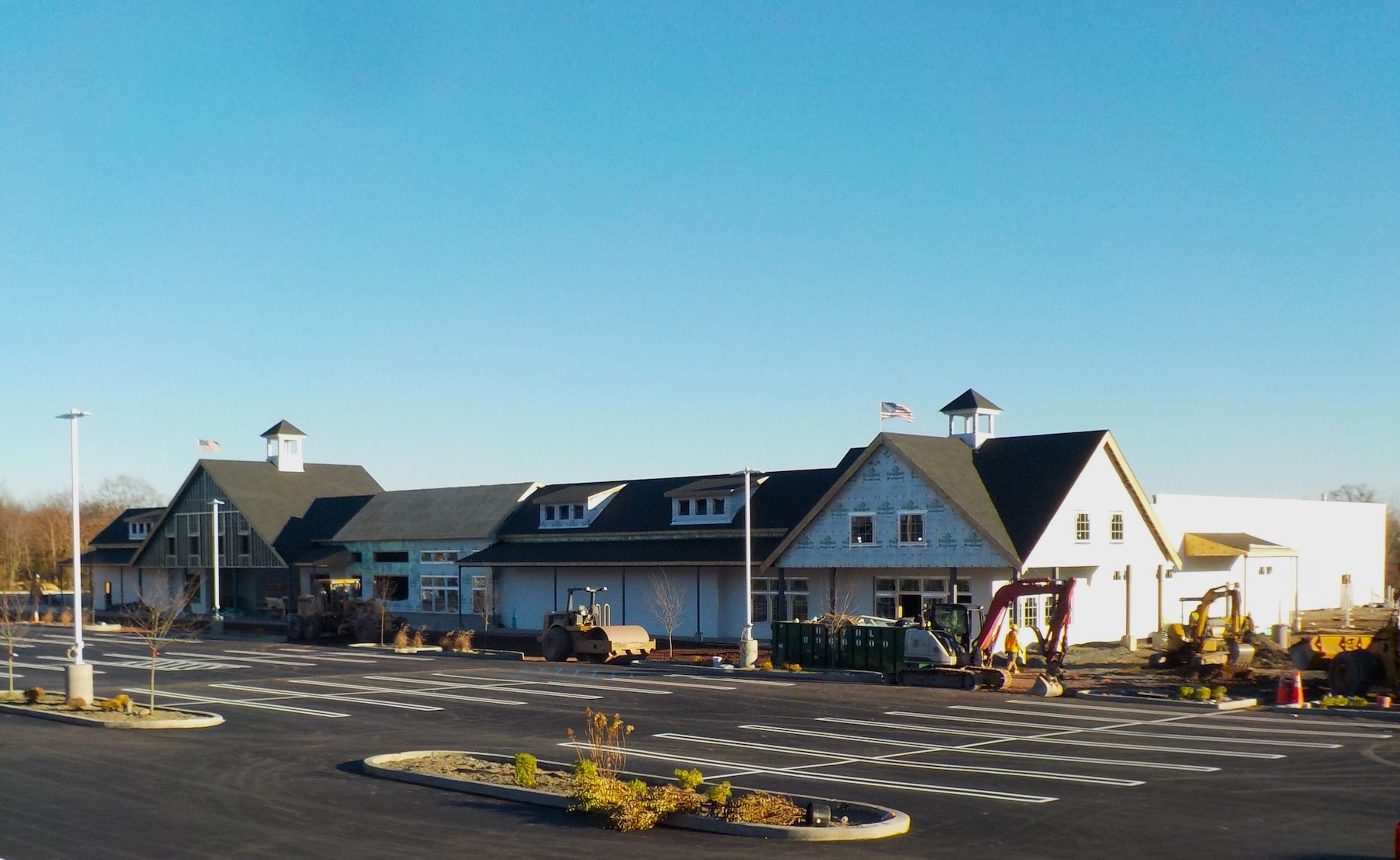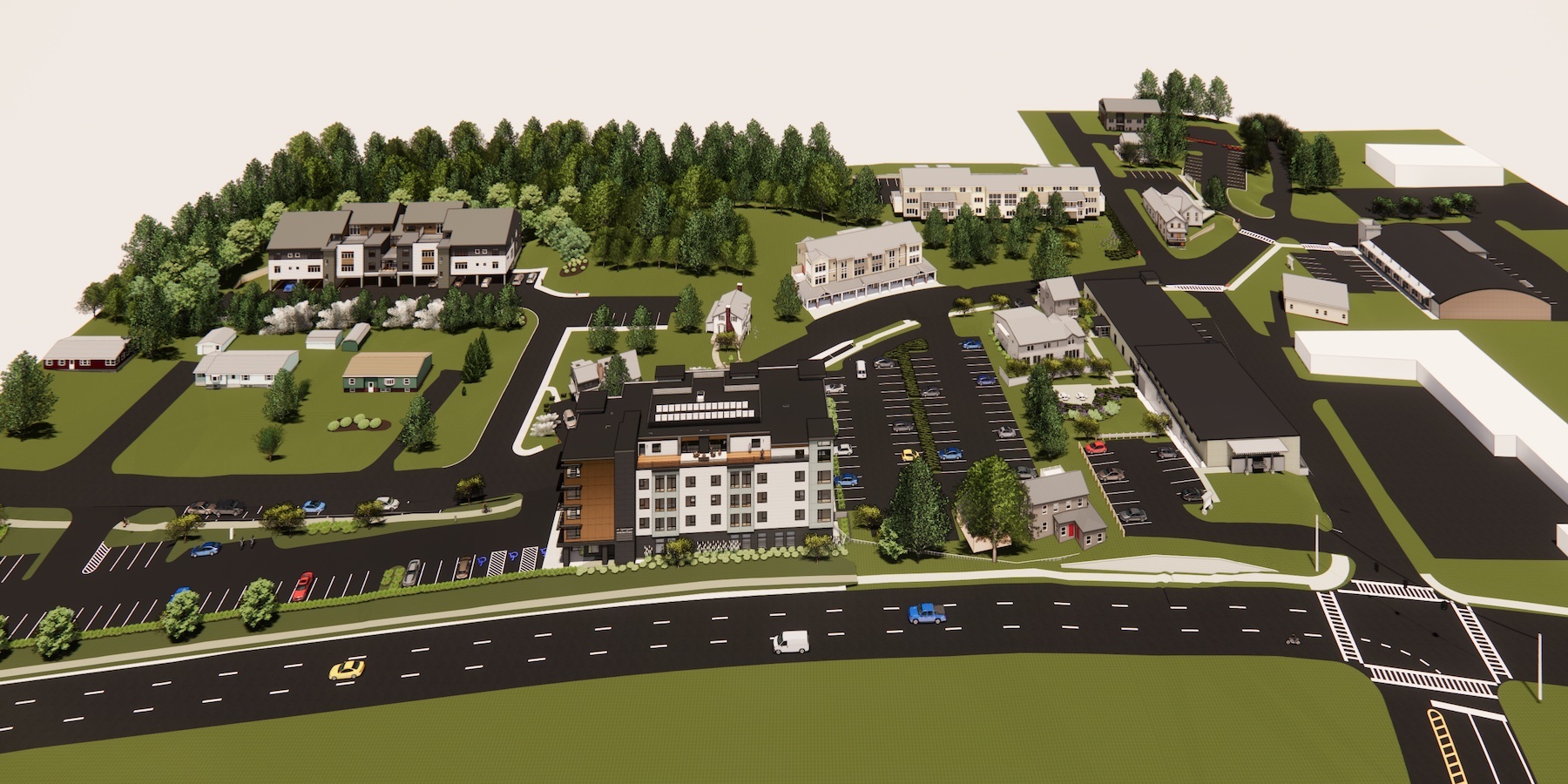Tinkelman Architecture is preparing to break ground on a five-story building, located at the Van Wagner Place mixed-use campus in Poughkeepsie, N.Y., that will have 28 luxury apartments, commercial space on the first floor with an indoor pool that will be used by the British Swim School franchise, and a top-floor community space that opens onto a roof deck.
Tinkelman Companies, the firm’s development and property management arm, has been involved with Van Wagner Place for a decade, starting with the renovation and repurposing of four derelict buildings. The campus is now home to offices, shops, and other businesses, as well as the firm’s headquarters inside a former warehouse in Poughkeepsie’s Arlington business district.
In fact, over the 30 years it has been serving New York’s Hudson Valley, Tinkelman Architecture has been the designer on more than 100 projects within that market. Its fingerprints can be found on local banks, wineries, restaurants, retail stores, historic structures and parks, to say nothing of the numerous residential projects it has engaged.
“We like doing a lot of housing,” says Steven Tinkelman, a Poughkeepsie native and life-long Hudson Valley resident, who founded Tinkelman Architecture in 1993. Over the years, his work has contributed to this market becoming, in his words, “more sophisticated, regional, cosmopolitan.”
Tinkelman Architecture generates between $1 million and $2 million per year in revenue from its design work, and double that when development and property management are included.
Wide-ranging projects
A graduate of Cooper Union and a modernist by training, Tinkelman also acknowledges the aesthetic influence of rustic summer camping as a child. “So there’s a blending of modern tradition with sticks and twigs,” he quips.
His 14-person firm has no signature architectural style, and he is fine with that agnostic approach because he believes it opens portals to pursue a diversity of projects in a market where, he says, other small design firms have come and gone. (While the market’s growth has attracted more civil engineering and construction firms, Tinkelman observes that there’s still a need for structural and mechanical engineers.)
One of Tinkelman Architecture’s better-known infrastructure projects was the design for the Upper Landing Park in Poughkeepsie, which sits under a 1.28-mile walkway across the Hudson River, which opened in 2009. The park includes an elevator to the walkway, which is the longest elevated pedestrian bridge in the world.

Among the projects Tinkelman Architecture is currently working on are a 56-unit residential building in Fishkill, N.Y., with 5,000 sf of commercial space; and a 40- to 45-unit residential building in the urban part of Poughkeepsie that will overlook its train station. The latter project, says Tinkelman, includes the restoration of an 1860s-era building that will be used by an arts organization.
The firm has also designed a four-story, 20-unit building called The Westerly, and was recently retained by New York’s Dutchess County to design a campus for homeless housing.
Seeking expansion opportunities
Among Tinkleman’s ongoing clients is the retailer Adams Fairacre Farms, whose stores mingle a country feeling with contemporary design. Tinkelman designed this retailer’s outlets in Newburgh and Wappinger, N.Y., and the expansion of its Poughkeepsie location. The firm is currently working on Adams Faircare Farms’ 56,643-sf store in Middletown, N.Y., which is under construction, and when completed next year will include a 2,905-sf tropical greenhouse and 6,048-sf seasonal greenhouse.

Tinkleman Architecture is looking to expand beyond the region with which it has become synonymous. It currently has active projects in Ulster and Orange counties (the latter is where the Middletown store will be located), and has been looking for opportunities in Westchester County and nearby Connecticut. But Tinkelman, who lives with his wife Rachel in Pleasant Valley, N.Y., says he still gets a kick from seeing local residents course through buildings and spaces in the mid-Hudson Valley his firm helped create.
Related Stories
| Apr 5, 2013
Snøhetta design creates groundbreaking high-tech library for NCSU
The new Hunt Library at North Carolina State University, Raleigh, incorporates advanced building features, including a five-story robotic bookBot automatic retrieval system that holds 2 million volumes in reduced space.
| Apr 5, 2013
'My BIM journey' – 6 lessons from a BIM/VDC expert
Gensler's Jared Krieger offers important tips and advice for managing complex BIM/VDC-driven projects.
| Apr 5, 2013
Commercial greenhouse will top new Whole Foods store in Brooklyn
Whole Foods and partner Gotham Greens will create a 20,000-sf greenhouse atop one of the retailer's Brooklyn supermarkets. Expected to open this fall, the facility will supply produce to nine Whole Foods stores in metro New York City.
| Apr 5, 2013
Projected cost for Apple's Campus 2 balloons to $5 billion
Campus 2, Apple Inc.'s proposed ring-shaped office facility in Cupertino, Calif., could cost $5 billion to build, according to a report by Bloomberg.
| Apr 5, 2013
Extreme LEGO: Wondrous micro city built out of 200,000 blocks
Master LEGO builder Mike Doyle unveils his latest creation, an out-of-this-world micro city that celebrates peaceful alien contact.
| Apr 3, 2013
AIA CES class: Sealant repairs that last – hybrid sealants for building restoration
It is hard to talk about restoration without talking about sustainability. This two-hour interactive online course discusses the role that restoration can and does play in the arena of sustainability, and specifically the role that sealants play in sustainable design and repair.
| Apr 3, 2013
Construction spending up 20% since 2011, growth will continue, says Gilbane report
The monthly rate of construction spending is up 20% in 24 months and increased in 18 of the last 24 months, which is a good leading indicator for new construction work in Q3-Q4 2013, according to Gilbane's latest Market Conditions in Construction report.
| Apr 3, 2013
5 award-winning modular buildings
The Modular Building Institute recently revealed the winners of its annual Awards of Distinction contest. There were 42 winners in all across six categories. Here are five projects that caught our eye.
| Apr 2, 2013
6 lobby design tips
If you do hotels, schools, student unions, office buildings, performing arts centers, transportation facilities, or any structure with a lobby, here are six principles from healthcare lobby design that make for happier users—and more satisfied owners.
| Apr 2, 2013
4 hospital lobbies provide a healthy perspective
A carefully considered entry zone can put patients at ease while sending a powerful branding message for your healthcare client. Our experts show how to do it through four project case studies.

















